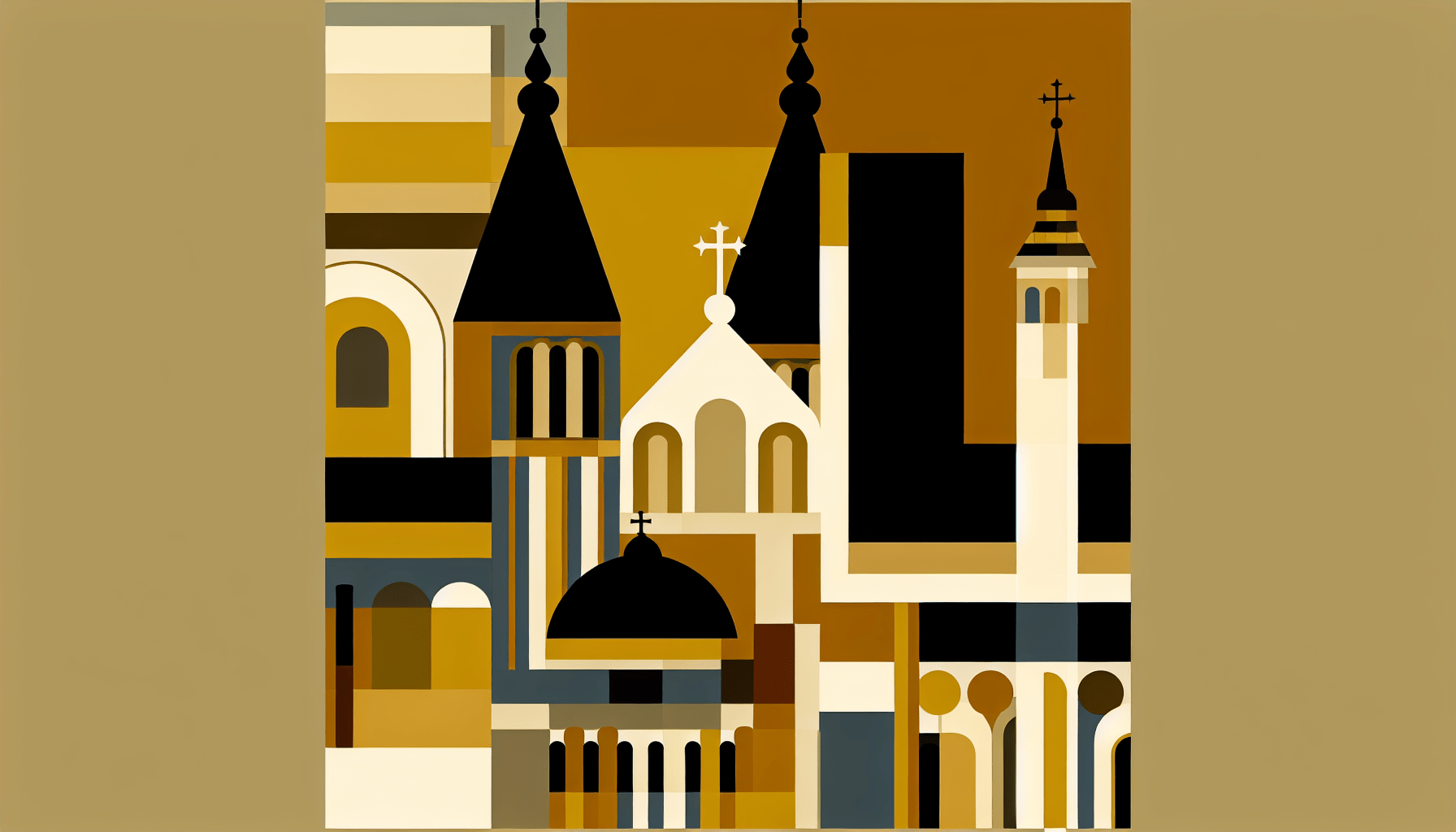Catholic Pilgrimage Sites: A Journey of Faith and Reflection
Catholic pilgrimage sites offer believers an opportunity to deepen their faith, reflect on their spiritual journey, and connect with the rich traditions of the Church. Across the globe, these sacred places draw millions of pilgrims each year, serving as spiritual havens where people seek healing, inspiration, and a closer relationship with God. In this blog post, we will explore some of the most significant Catholic pilgrimage sites, their unique features, and the experiences they offer to those who visit.
What is a Pilgrimage?
Before delving into specific sites, it’s essential to understand what a pilgrimage is. A pilgrimage is a journey to a sacred place, often undertaken for religious reasons. For Catholics, it is a profound way to express one’s faith, seek spiritual renewal, and fulfill a personal or communal desire for penitence or grace. It can involve walking for miles, attending special Masses, or participating in rituals that highlight the spiritual significance of the journey.
While many pilgrims travel to famous locations, each pilgrimage is personal and can vary widely in purpose and experience. The act of pilgrimage itself embodies a sense of commitment, humility, and devotion, providing an enriching experience for participants.
Famous Catholic Pilgrimage Sites Around the World
Several Catholic pilgrimage sites stand out due to their historical significance, miraculous happenings, or outstanding beauty. Here are some prominent destinations for those seeking a transformative pilgrimage experience:
1. Lourdes, France
Lourdes is perhaps one of the most recognized Catholic pilgrimage sites in the world. Located in the foothills of the Pyrenees, it is famous for the apparitions of the Virgin Mary to a young girl named Bernadette Soubirous in 1858.
Why Visit Lourdes?
Pilgrims flock to Lourdes to seek healing, both physical and spiritual. Many visit the Grotto of Massabielle, where Mary appeared, and drink from or bathe in the miraculous waters. Various services, including Mass and confession, are offered throughout the year, making it a hub for spiritual renewal.
What to Expect?
Visitors can expect a serene atmosphere filled with faith and hope. The nightly candlelight procession is a highlight, with pilgrims walking in prayerful contemplation while holding candles aloft, illuminating their path as they sing hymns and pray.
2. Santiago de Compostela, Spain
The Camino de Santiago, or the Way of St. James, is one of the most famous pilgrimage routes in the world, leading to the cathedral in Santiago de Compostela, where it is believed that the remains of St. James the Apostle are buried.
Why Walk the Camino?
Pilgrims undertake the Camino for various reasons—spiritual, physical, or a mixture of both. The journey allows for personal reflection in the context of stunning landscapes and cultural richness.
Tips for Pilgrims
There are multiple routes to Santiago, with the Camino Francés being the most popular. Pilgrims should prepare to walk several hours each day, stay in albergues (hostels), and embrace the camaraderie of fellow travelers. Completing the Camino can be a profoundly rewarding experience that strengthens one’s faith and sense of community.
3. Fatima, Portugal
The Sanctuary of Our Lady of Fatima is another essential pilgrimage destination, known for the Marian apparitions reported by three shepherd children in 1917.
What Can Pilgrims Experience at Fatima?
At Fatima, pilgrims come to pray, reflect, and seek intercession from the Virgin Mary. The site is renowned for its peaceful atmosphere and vibrant community of faithful. The highlight of many visits is the International Candlelight Procession on the evening of the 12th of each month from May to October.
Historical Significance
Fatima’s messages emphasize prayer, penance, and devotion, making the site not only a place for healing and reflection but also a powerful reminder of the Catholic faith’s core teachings.
4. The Vatican, Rome
As the heart of the Catholic Church, the Vatican is a central pilgrimage site for Catholics worldwide. Home to St. Peter’s Basilica, the Sistine Chapel, and the Pope, the Vatican is steeped in history and spiritual significance.
Why Visit the Vatican?
Pilgrims visit to attend Mass, receive the Pope’s blessing, or explore the rich history embodied in its works of art and architecture. The Vatican Museums house some of the world’s most important art treasures, drawing believers and art lovers alike.
Experiencing the Vatican
Visitors can join in the papal audience held on Wednesdays, where the Pope speaks to thousands and offers blessings. Guided tours can also enhance the experience, providing deeper insights into the history and significance of various sites.
5. San Juan de los Morros, Venezuela
A lesser-known but equally compelling pilgrimage site is San Juan de los Morros, home to the Sanctuary of the Virgen de la Candelaria. Pilgrims from across Venezuela visit this site, especially during the festival dedicated to the Virgin Mary in February.
Local Significance
The site holds personal significance for many Venezuelans, who view the Virgin as a protector and source of hope. The local community welcomes pilgrims with open arms, and participants often partake in traditional celebrations, blending faith with culture.
Preparing for a Pilgrimage
Before embarking on a pilgrimage, adequate preparation is crucial to ensure a fulfilling experience:
1. Research Your Destination
Understand the pilgrimage site you plan to visit. Read about its history, significance, and any rituals or practices that may enhance your visit. Knowing what to expect can help create a more structured and meaningful experience.
2. Reflect on Your Purpose
Take some time to reflect on your intentions for undertaking the pilgrimage. Whether seeking personal growth, healing, or a spiritual challenge, having clear intentions can guide your experience and deepen your engagement with the pilgrimage.
3. Plan Your Journey Carefully
Consider logistics such as travel, accommodation, and estimated costs. Some pilgrims prefer to walk long distances, while others may opt for organized tours. If walking, ensure you train your body for the physical demands of the journey.
The Impact of Pilgrimage on Faith
Pilgrimages have the power to transform lives and deepen faith. Many pilgrims return with renewed spirits, having encountered God in profound ways. Here are some ways in which pilgrimage can impact one’s spiritual journey:
1. Strengthening Community Bonds
Pilgrimages often create a sense of unity among participants. Sharing experiences, prayers, and challenges fosters camaraderie, leading to lasting friendships and spiritual kinship.
2. Deepening Spiritual Insights
Encountering sacred places can lead to transformative moments of clarity and introspection. Pilgrims often leave enriched by newfound understandings of their personal beliefs and responsibilities as followers of Christ.
3. Cultivating a Spirit of Adventure
Embarking on a pilgrimage encourages pilgrims to step out of their comfort zones, embrace new challenges, and face the unknown. This spirit of adventure can reignite passion in one’s faith and inspire ongoing spiritual exploration.
Conclusion
Catholic pilgrimage sites are more than just destinations; they are sacred places that offer profound opportunities for reflection, healing, and growth in faith. Whether visiting well-known sites like Lourdes, Santiago de Compostela, and the Vatican or exploring less-traveled paths like San Juan de los Morros, each pilgrimage provides a unique journey that can significantly enhance one’s spiritual life.
As you consider your pilgrimage experience, remember that it is not merely a physical journey but a spiritual one that invites you to encounter God more closely. Embrace the call to pilgrimage and discover how these sacred sites can leave a lasting impact on your faith journey. By exploring Catholic pilgrimage sites, you open yourself up to a transformative experience filled with hope, inspiration, and the promise of spiritual renewal.




